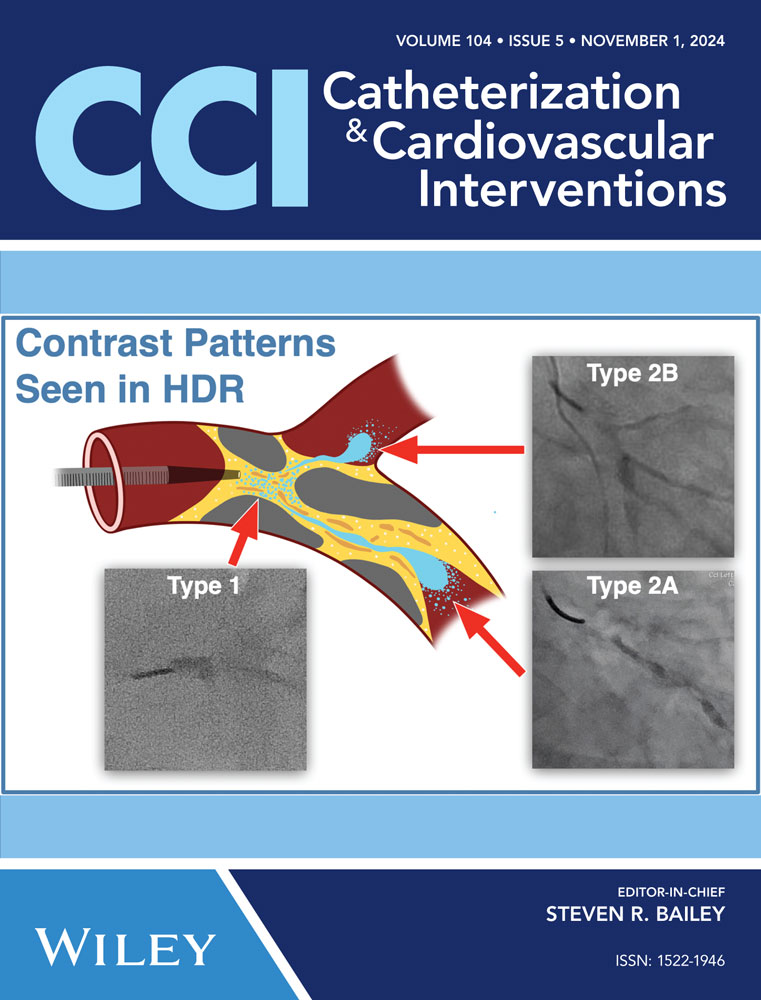Impact of systolic dominant pulmonary venous flow morphology on outcomes after mitral transcatheter edge-to-edge repair
Dr. Samimi and Dr. Hatab contributed equally to the manuscript.
Abstract
Background
The prognostic significance of intraprocedural pulsed-wave Doppler analysis of pulmonary venous flow (PVF) during mitral transcatheter edge-to-edge repair (TEER) remains understudied. We aimed to investigate the prognostic value of systolic dominant-PVF (SD-PVF) morphology post-TEER.
Methods
In a retrospective analysis from December 2019 to December 2022, patients undergoing mitral TEER were categorized into SD-PVF and systolic blunting (SB)-PVF groups based on post-TEER morphology. The primary endpoint was a composite of all-cause mortality or heart failure hospitalization at 1 year. We investigated the association of PVF morphology post-TEER with the primary endpoint at 1 year using Cox regression and compared the prognostic accuracy of PVF variables through receiver operating characteristic (ROC) curve analysis.
Results
Among 187 patients (mean age 76.4 ± 10.5 years, 51.3% primary etiology), residual mitral regurgitation (MR) ≤mild was observed in 147 (82.4%) patients and 105 (56.2%) had SD-PVF post-TEER. Patients with SD-PVF had a lower incidence of >2+ residual MR after clip deployment, at 30 days (2.1% vs. 13.1%; p = 0.005) and at 1 year (1.4% vs. 9%; p = 0.08). SD-PVF post-TEER was independently associated with the primary endpoint (HR = 0.59, 95% CI = 0.39–0.87; p = 0.009). ROC curve analysis of the prognostic accuracy of SD-PVF demonstrated an AUC of 0.64 (95% CI = 0.54–0.73), comparable to other quantitative measures of PVF.
Conclusion
Assessing PVF morphology after clip deployment offers a simple prognostic tool for patients undergoing mitral TEER. Multicenter cohorts will be necessary to further investigate its prognostic value.
CONFLICT OF INTEREST STATEMENT
The authors declare no conflicts of interest.
Open Research
DATA AVAILABILITY STATEMENT
The data that support the findings of this study are available from the corresponding author upon reasonable request.




